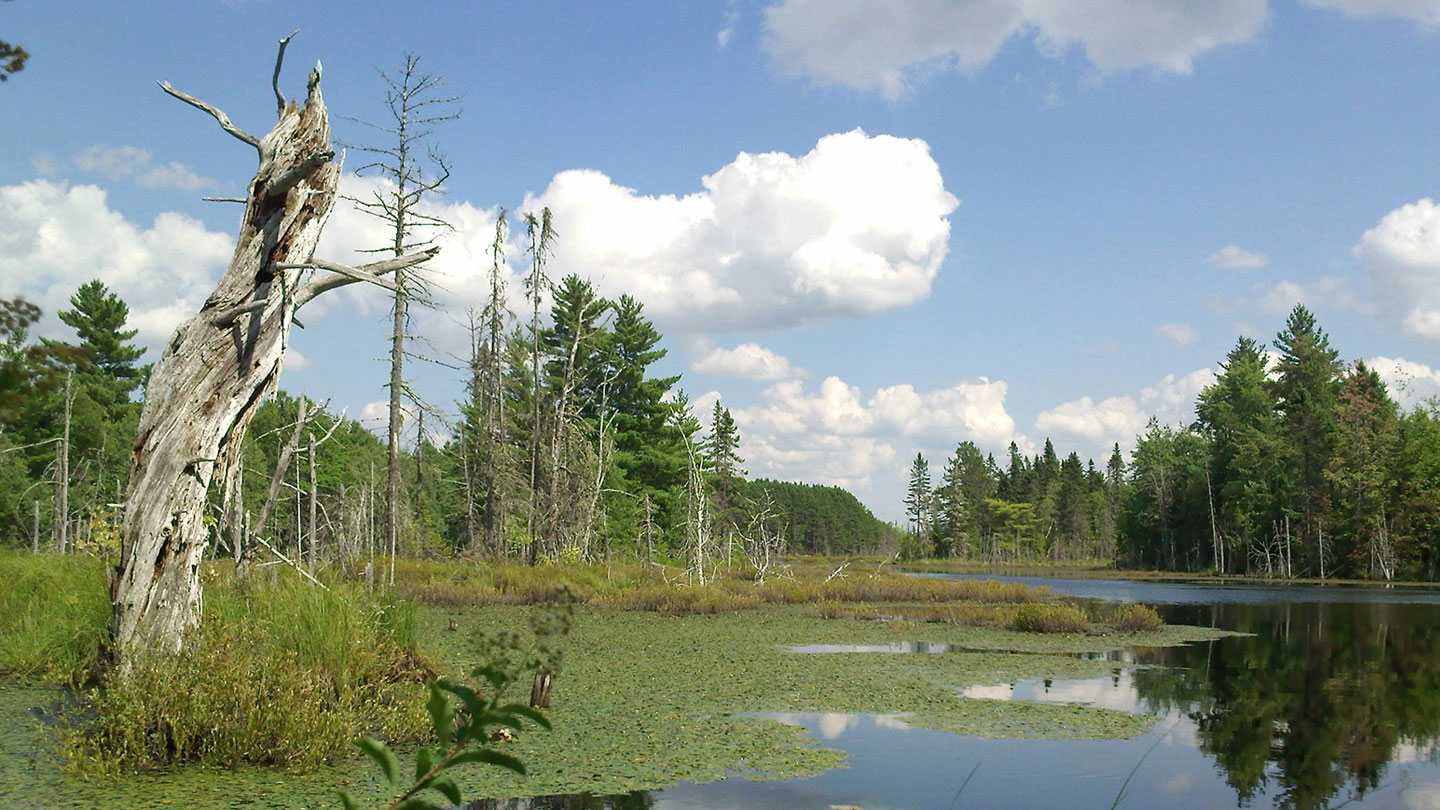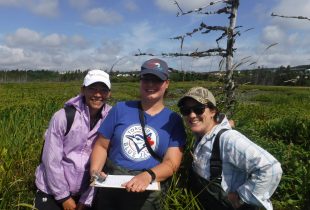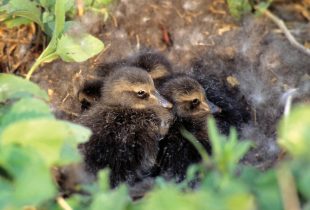How our work impacts conservation across Canada.
Where we’re working on the ground from coast to coast.
We need your help to protect our water, wildlife, and wetlands. Here’s how you can make an impact.
Get Involved
Newfoundland & Labrador
Newfoundland and Labrador is famous for its postcard views of passing icebergs, rocky capes and dense boreal forest.
The province is also home to a stunning range of wildlife, from its 35 million seabirds (including gannets, puffins and storm-petrels) to migrating humpbacks and right whales. Wend your way on foot through stands of birch and fir trees to spot mallards, loons and songbirds.
Even better: take a walk before dusk to watch the sun set and the sky change from blue to pink to purple over one of the region’s pristine freshwater marshes.
Why Newfoundland & Labrador’s Wetlands are Threatened
Wetlands in Newfoundland and Labrador provide important habitat for millions of migrating waterfowl, especially eider. They buffer high tides and storms that cause erosion and flooding. The province’s inland boreal wetlands are critical to Canada geese, American black ducks and green-winged teal. They give people places to fish, hike, canoe, hunt, and find solace.

Changing environment
Our changing environment is putting them at risk. Extreme weather. Rising sea levels. Land conversion. Sixty-five per cent of wetlands in Canada’s coastal areas have been altered or destroyed. It’s time for conservation efforts that will protect the defining natural features of Canada’s east coast. These are treasures we can’t afford to lose.

How We’re Saving Wetlands in Newfoundland & Labrador
As one of Canada’s most trusted conservation organizations, we conserve at-risk wetlands before we lose them, targeting areas with high rates of wetland loss. We’re experts in habitat restoration. We can bring drained and damaged wetlands back to life.
But we can’t do it alone. Every single acre we’ve restored is thanks to our dedicated landowners, volunteers and supporters.
Eider nest shelters
Groups of dedicated volunteers from across Newfoundland and Labrador deploy and inspect eider nest shelters thoughout the province. This work is critical in Newfoundland and Labrador as nesting shelters provide common eiders with protection from predators where natural cover, like tall grass or shrubs, is scarce. Conservation groups like DUC have been using the shelters to reverse eider decline in the province over the past 20 years.
Dams, dykes and fishways
Across Atlantic Canada, DUC manages more than 52,000 acres of wetlands behind 550 water controls and dykes. One hundred and sixty of these projects are equipped with fishways to help fish pass in and out of wetlands. DUC will rebuild key projects on an annual basis so that these habitats continue to sustain waterfowl, fish and other wildlife.
Science
World-class scientists at Ducks Unlimited Canada (DUC) are discovering the impacts of human activity on Atlantic Canada’s landscape, and these discoveries are helping inform public policy. They’re providing answers to some of the provinces’ most pressing environmental concerns. From fishways to salt marsh restoration, our research is making a difference for wildlife and people.
Wetland mapping
Knowing the location and type of wetlands across the region is an important part of conservation. That’s why DUC teamed up with Dr. Bahram Salehi and his crew at LOOKNorth to create a state of-the-art GIS wetland map. The new map will help DUC not only locate wetlands, but determine the type of wetlands they find across the province. It will also help advance a provincial wetland conservation policy.
Beaubassin Research Centre
Nestled on Beauséjour Marsh near the New Brunswick/Nova Scotia border, the site of the Beaubassin Research Centre has a rich history. Both Aboriginal peoples and Acadian settlers used it as a meeting place.
Policy
Atlantic Canada has a strong history of partnering with governments. It’s leading the country in developing effective policies that protect wetlands. Government relations and collaboration are key to our success.
Protecting wetlands before they are altered or destroyed is the ideal conservation measure. This is best achieved through wetland conservation policies and regulations. In Newfoundland and Labrador, DUC is putting forward policy recommendations that will address the province’s unique landscape, needs and economy.
Education
DUC’s education programs are shaping Atlantic Canada’s conservation leaders. We’re bringing the wonder of wetlands into people’s lives by delivering education that provides outdoor learning opportunities.
Project Webfoot
Discovering what slithers, swims and hops in wetlands is part of DUC’s Project Webfoot. This unique education program combines in-class resources and teaching with wetland field trips and hands-on learning, and connects students to nature. DUC delivers Project Webfoot to classes across Atlantic Canada and has reached more than 150,000 students.
Wetland Centres of Excellence
Students at DUC’s Wetland Centres of Excellence (WCE) spend class time outside in a marsh learning about wetland critters and wildlife, and teaching what they learn to others. Students from nearby elementary schools make trips to WCEs to learn about wetlands from the high schoolers.
In New Brunswick, we have WCEs at Tantramar High School in Sackville, N.B., Simonds High School in Saint John, N.B., and Fredericton High School in Fredericton, N.B.
Interpretive centres
Atlantic Canada is home to two DUC interpretive centres: the Ducks Unlimited
Conservation Centre in Fredericton, N.B. and the Wetland Interpretive Centre in Shubenacadie, N.S. Both facilities are education hubs, giving students up-close encounters with nature.



